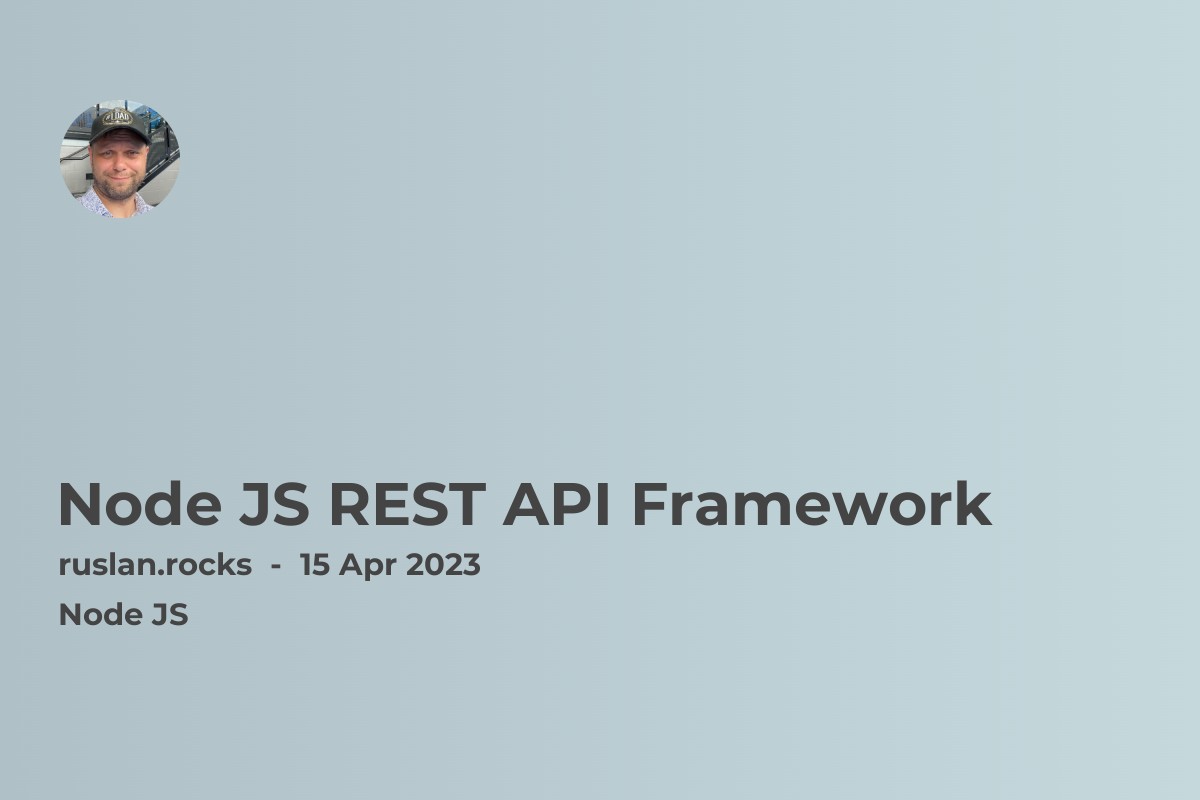- Create a Rest API with Node.js: A Comprehensive Tutorial
- What is a RESTful API?
- Understanding the Principles of REST Architecture
- Why Use a REST API in node.js?
- Getting Started with Node.js
- Creating a RESTful API with Node.js
- Sources

Create a Rest API with Node.js: A Comprehensive Tutorial
If you're looking to build a RESTful API using Node.js, you've come to the right place. In this tutorial, we'll guide you through the process of creating a RESTful API with Node.js, step by step.
What is a RESTful API?
Understanding the Principles of REST Architecture
REST (Representational State Transfer) is an architectural style used to design web services. A RESTful API adheres to the principles of REST, which include using HTTP methods (e.g., GET, POST, PUT, DELETE) to perform CRUD (Create, Read, Update, Delete) operations on resources, using URIs to identify resources, and using a uniform interface for communicating with the client.
Why Use a REST API in node.js?
A RESTful API is an excellent option for building web services as it is scalable, flexible, and easy to maintain. As RESTful web services use HTTP methods, it is easy to integrate them with any programming language or platform that supports HTTP. Additionally, a RESTful API can handle a large number of requests concurrently, making it ideal for high traffic websites and applications.
Getting Started with Node.js
What is Node.js?
Node.js is an open-source, cross-platform, runtime environment that allows developers to build scalable and high-performance applications using JavaScript. It uses an event-driven, non-blocking I/O model, which makes it an excellent option for building real-time applications such as chat applications or web sockets.
Setting Up the Node.js Environment
The first step to building a RESTful API with Node.js is to set up the development environment. Follow these steps to set up the Node.js environment:
-
Install Node.js on your machine.
-
Create a new directory on your machine where you'll store your project files.
-
Open the directory in a command prompt or terminal.
-
Run the command "npm init" to initialize a new Node.js project.
-
Answer the prompts to configure your project.
-
Install the "Express.js" framework by running the command "npm install express".
Creating a RESTful API with Node.js
Defining the Endpoints
The first step to building a RESTful API is to define the endpoints. An endpoint is a URI that represents a resource, such as a customer or an order. Here is an example of how to define endpoints:
We'll need to start to add the following code :
app.get('/customers', (req, res) => {
// Code to retrieve all customers
});
app.get('/customers/:id', (req, res) => {
// Code to retrieve a single customer identified by ID
});
app.post('/customers', (req, res) => {
// Code to create a new customer
});
app.put('/customers/:id', (req, res) => {
// Code to update a customer identified by ID
});
app.delete('/customers/:id', (req, res) => {
// Code to delete a customer identified by ID
});
Handling HTTP Post Requests
Once you've defined your endpoints, the next step is to handle HTTP requests. You'll need to define the logic for each HTTP method, such as GET, POST, PUT, and DELETE. Here is an example of how to handle a GET request to retrieve all customers:
app.get('/customers', (req, res) => {
const customers = [
{ id: 1, firstName: 'John', lastName: 'Doe' },
{ id: 2, firstName: 'Jane', lastName: 'Doe' },
];
res.json(customers);
});
CRUD Operations with MongoDB
One of the main benefits of using a RESTful API is the ability to perform CRUD operations on resources such as databases. In this tutorial, we'll use MongoDB as our database and the mongoose package to interact with it. Here is an example of how to connect to MongoDB:
const mongoose = require('mongoose');
mongoose.connect('mongodb://localhost/myapp', { useNewUrlParser: true });
Building a RESTful API with Node.js is a great way to create scalable and flexible web services. In this tutorial, we covered the basics of REST, the principles of Node.js, and how to create a RESTful API using Express.js and MongoDB. With the knowledge gained from this tutorial, you'll be able to create your RESTful API using Node.js and take your web development skills to the next level.
